Determining what pressure washer is best for you depends entirely on your personal needs. You need to have a rough estimate of what you plan on washing with it, how frequently you plan on using it, as well as where it is likely to see action. For example, a homeowner wanting to wash the siding in the spring will have very different needs than a professional painter needing to prep walls for repainting.
Another important factor to consider is where you plan on using your pressure washer. A weekend warrior washing the family truck might only need an electric washer to get bugs out of the grille. Meanwhile, a handyman cleaning a parking lot needs the mobility of a gas motor since there might not be any electrical outlets nearby. There are countless uses for these versatile tools, and just the same, there are countless configurations to fulfill any need.
Pressure washers are complicated machines and there is a lot to consider, so let’s get right to it.
What Do You Need To Read About?
- Common Uses
- PSI and GPM
- Gas or Electric
- Cold Water or Hot Water
- Direct Drive or Belt Drive
- Helpful Features
- Accessories
What Are You Using It For?
Commercial Cleaning
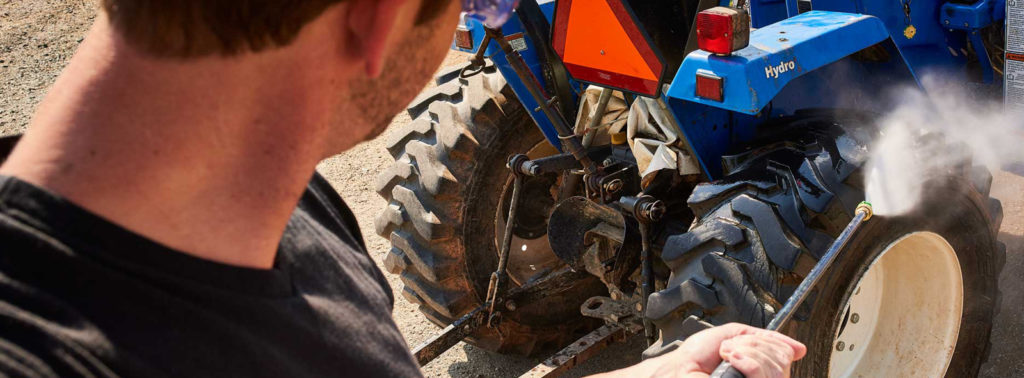 Most commercial applications need a gas powered pressure washer. Employing a gas engine affords a stronger spray, as well as easy serviceability, should something go haywire. Typically, pro-level cleaning demands no less 3,200 PSI of water pressure, along with 4.0 GPM of water flow when using cold water. Really tough stains and paint stripping need even more force, around 4,000 PSI. This level of pressure cleans heavy pavement stains quickly and reaches the tops of tall walls. Since they’re so powerful, they can even chip paint and engrave wood, so caution is advised.
Most commercial applications need a gas powered pressure washer. Employing a gas engine affords a stronger spray, as well as easy serviceability, should something go haywire. Typically, pro-level cleaning demands no less 3,200 PSI of water pressure, along with 4.0 GPM of water flow when using cold water. Really tough stains and paint stripping need even more force, around 4,000 PSI. This level of pressure cleans heavy pavement stains quickly and reaches the tops of tall walls. Since they’re so powerful, they can even chip paint and engrave wood, so caution is advised.
Common Commercial Pressure Washer Uses:
- Stripping paint for surface prepping
- Cleaning sidewalks, driveways, patios, or other large concrete surfaces
- Scrubbing brickwork
- Removing dirt from farm/ranch or construction equipment
- Sweeping out livestock stables
- Clearing commercial spaces
- Washing boats
Consumer Cleaning
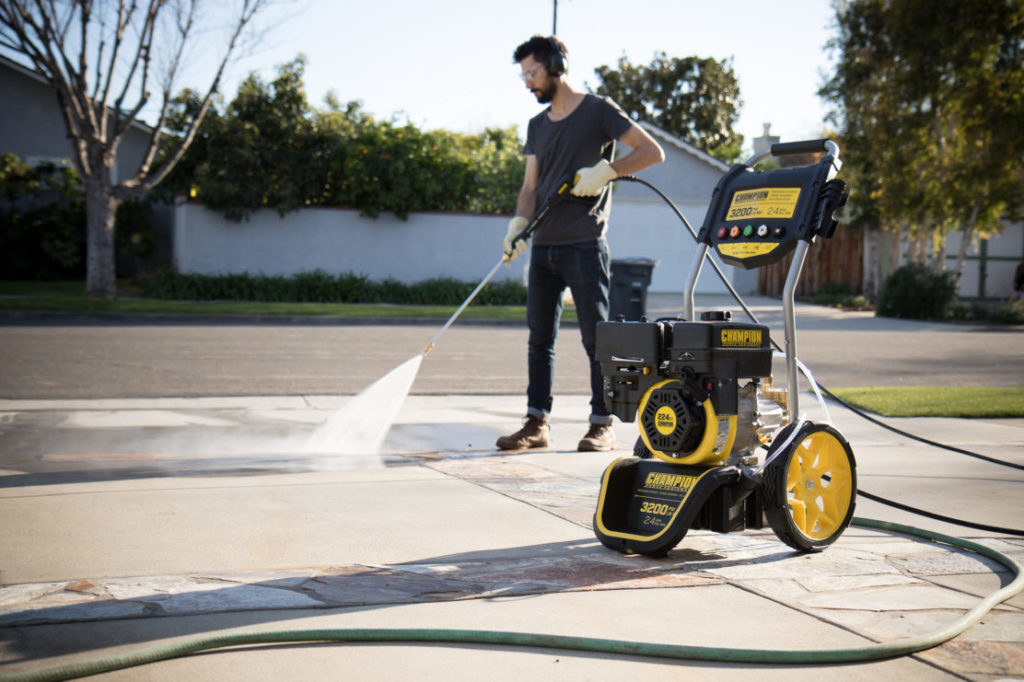 Consumer pressure washer users don’t need quite the same power as professionals. Electric or lower-end gas models provide plenty of cleaning ability. Consumer-grade gas models are up to about 3200 PSI with 3.0 GPM, while consumer electric models top out around 2000 PSI and 1.6 GPM. They are enough for removing tough dirt on the front steps, safely spraying down the car, or removing grime from the gutters. They’re designed for occasional use, so don’t plan on working with it every day.
Consumer pressure washer users don’t need quite the same power as professionals. Electric or lower-end gas models provide plenty of cleaning ability. Consumer-grade gas models are up to about 3200 PSI with 3.0 GPM, while consumer electric models top out around 2000 PSI and 1.6 GPM. They are enough for removing tough dirt on the front steps, safely spraying down the car, or removing grime from the gutters. They’re designed for occasional use, so don’t plan on working with it every day.
Common Consumer Pressure Washer Uses:
- Rinsing the car on weekends
- Cleaning siding in the spring
- Washing the patio or driveway
- Pool scrubbing
- Rejuvenating wood fences
- Gutter clearing
What the heck are PSI and GPM?
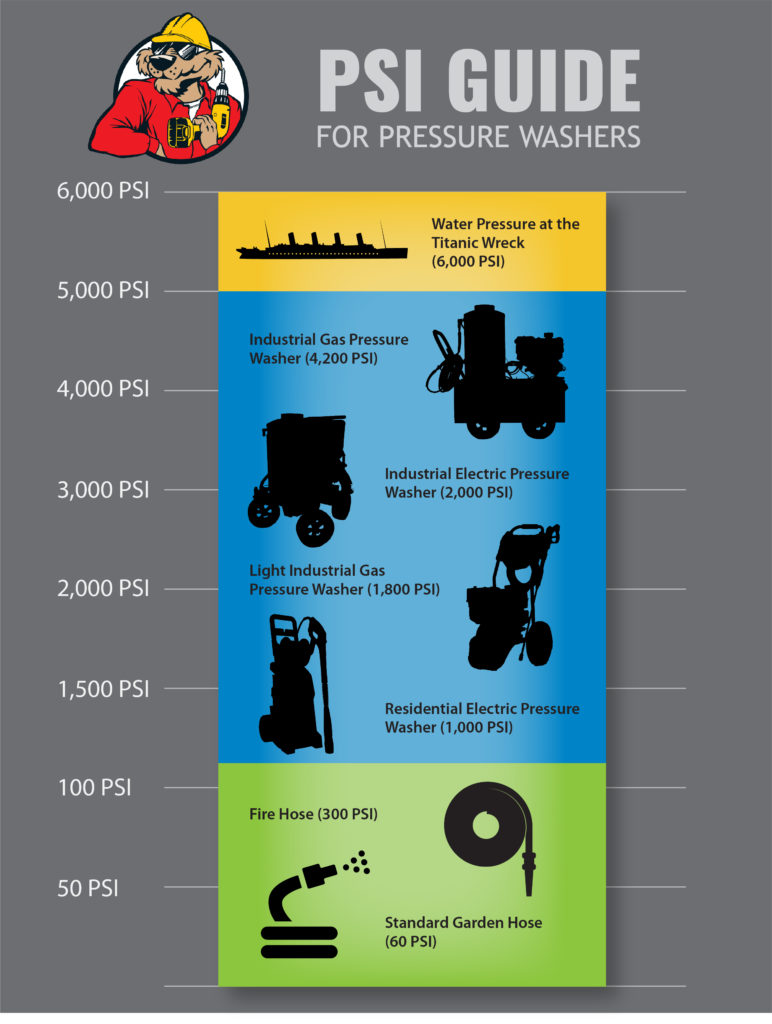
Pressure (PSI / Pounds per square inch) and flow rate (GPM / Gallons per minute) are the first numbers to consider when making your decision to purchase. Water pressure breaks apart chunks of dirt, while flow rate determines how quickly the particles are rinsed away. The higher both numbers get, the more forceful the unit becomes.
Modest Power: Up to 2,000 PSI
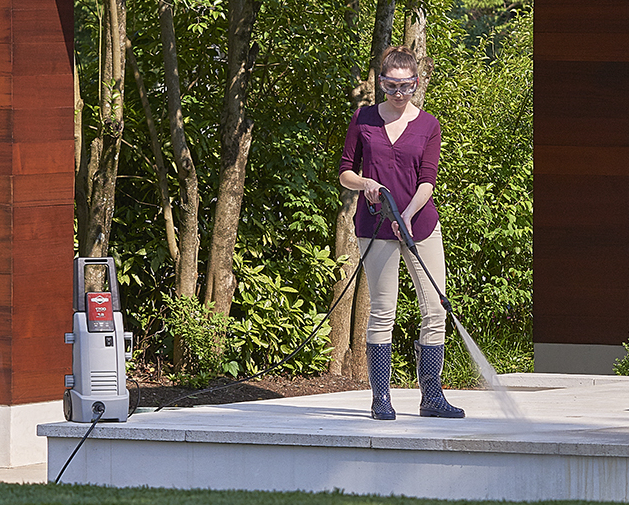 The smallest models of pressure washers available, those with up to 2,000 PSI, make ideal choices for everyday jobs. These instruments offer more than adequate strength to clean up even the dirtiest outdoor furniture in seconds. You can also rely on them to spray off cars between washes and as regular window rinses.
The smallest models of pressure washers available, those with up to 2,000 PSI, make ideal choices for everyday jobs. These instruments offer more than adequate strength to clean up even the dirtiest outdoor furniture in seconds. You can also rely on them to spray off cars between washes and as regular window rinses.
Mid-Range Power: 2,000 to 3,200 PSI
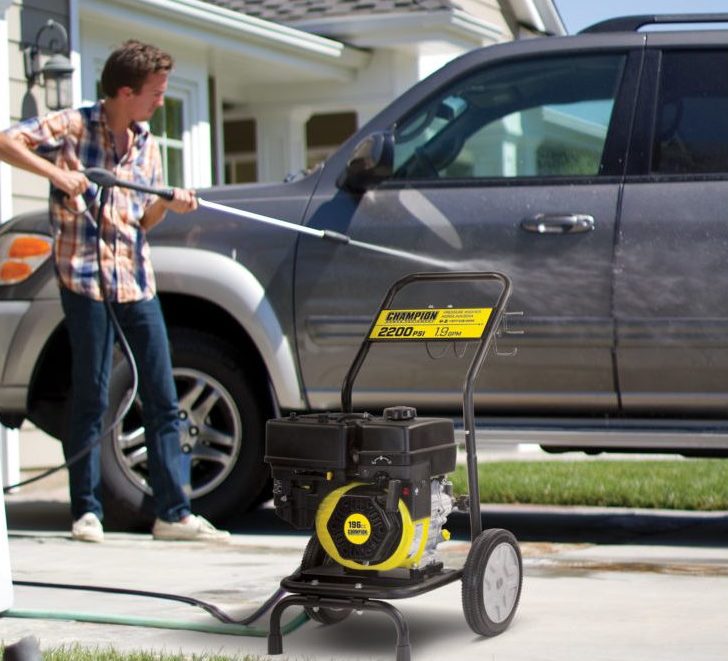 The most versatile category of pressure washers is those delivering between 2,000 to 3,200 PSI. They can effectively clean cars (including the most well-used off-road vehicles), home siding, fences, boats and also grimy garage floors, without running any risks of damaging anything. The stronger ones, especially those closer to 3,200 PSI, can even effectively remove tough stains. Because of their flexibility, professionals use these for tough cleanups in the shop.
The most versatile category of pressure washers is those delivering between 2,000 to 3,200 PSI. They can effectively clean cars (including the most well-used off-road vehicles), home siding, fences, boats and also grimy garage floors, without running any risks of damaging anything. The stronger ones, especially those closer to 3,200 PSI, can even effectively remove tough stains. Because of their flexibility, professionals use these for tough cleanups in the shop.
Maximum Power: 3,200 to 4,200 PSI
 Reliable on all the toughest jobs, pressure washers with 3,200 to 4,200 PSI pack enough punch to strip away paint and remove even the most stubborn stains. They really earn their stripes when cleaning solid surfaces, such as stone and brick. Because of their extreme brawn, these heavy-duty models should rarely be used wood surfaces or cars. It’s no exaggeration when we say you could easily etch your name into the paint job. At any rate, if you’re using maximum power machines, you should expect top performance in all of your most difficult jobs.
Reliable on all the toughest jobs, pressure washers with 3,200 to 4,200 PSI pack enough punch to strip away paint and remove even the most stubborn stains. They really earn their stripes when cleaning solid surfaces, such as stone and brick. Because of their extreme brawn, these heavy-duty models should rarely be used wood surfaces or cars. It’s no exaggeration when we say you could easily etch your name into the paint job. At any rate, if you’re using maximum power machines, you should expect top performance in all of your most difficult jobs.
GPM
Gallons Per Minute, or GPM, is the flow rate of the water spraying from the wand. Flow rate determines how long a cleaning job takes. Commercial users need up to 4.0 GPM or more for the purpose of finishing in less time. Residential users can get away with having lower flow, generally between 1.0 and 3.2 GPM is plenty. In this case, any extra water won’t have much of a noticeable effect on small cleaning tasks.
Cleaning Units
High PSI is not the be-all-end-all of cleaning ability. Some pressure washers feature a rating called “cleaning units”. These units are like a performance score, pressure multiplied by the flow rate. To calculate it, just remember the formula PSI x GPM. As the number gets higher, the more stain-removing power it has, and therefore finishing your work sooner.
| Image | Model | PSI | GPM | Cleaning Units |
|---|---|---|---|---|
 |
JCW-3003-2MHB | 3000 | 3.0 | 9000 |
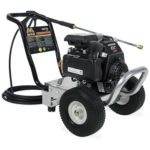 |
WP-3200-0MHB | 3200 | 2.4 | 7680 |
Gas vs. Electric Pressure Washers
There are two types of pressure washers available, gas-powered and electric. They are both made for specific tasks, so it’s worth knowing what makes them different. Electric washers use an electric motor to power the pump, which limits the total power output. Gas pressure washers have much higher torque, so they can operate a much larger pump and therefore have much higher pressure. Higher pressure from the nozzle also means much more recoil, so be prepared to wrestle a rocket if you opt for a high-end gas machine.
What Are Hot Water Pressure Washers?
 Hot water pressure washers operate on the same principle as your dishwasher at home. Since hot water breaks up grease and oil, it allows it to be flushed away more easily. This happens at a molecular level, where the heat breaks the bonds within the grease. As a result of not depending solely on the force of the water to clean, hot washers can clean more effectively with a lower PSI than cold washers.
Hot water pressure washers operate on the same principle as your dishwasher at home. Since hot water breaks up grease and oil, it allows it to be flushed away more easily. This happens at a molecular level, where the heat breaks the bonds within the grease. As a result of not depending solely on the force of the water to clean, hot washers can clean more effectively with a lower PSI than cold washers.
Perks Of Hot Water
- Hot water is needed to clean grease and oils
- Cleans faster and using fewer chemicals
- Needed for cleaning automotive parts and engine bays, body shops, etc.
- They can also create steam to disinfect surfaces
Downsides Of Hot Water
- Costs more
- Larger units are harder to move
- Lower PSI and GPM
Direct Drive and Belt Drive
Another decision you might have to make is between direct drive or belt drive pressure washers. Direct-drive and belt-drive refer to the method the motor transmits rotational energy to the water pump. In direct drive pressure washers, the crankshaft attaches straight to the pump. In belt-drive systems, the energy moves through a belt to turn the pump.
What’s the difference?
Direct drives are more efficient at transferring energy to the pump, without a belt to create extra friction. They also have a simpler construction and thus generally cost a little less. By having few parts, they are usually smaller and easier to store. The direct drive won’t be as sturdy for professional use, but the price and size make them a great option for homeowners and other less-frequent users.
Belt drives, however, operate the pump at a lower RPM and reduce heat and vibrations hitting the pump. Less strain placed on the pump means it will last much longer than direct drives before needing replacing. If you plan to use it for commercial purposes, the extra investment for a belt-drive will pay off long-term.
Important Features
Pro-grade powerwashers will have more bells and whistles than cheaper consumer units, but some have even more features than others. Before you buy yours, be sure to double-check whether it has these components.
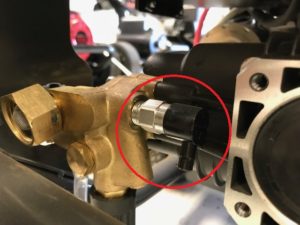 Pump Thermal Relief Valve
Pump Thermal Relief Valve
- The pump has a lot of moving parts, so it will heat up as you work. Pumps are water-cooled, but if the water inside gets too hot it damages the mechanisms. A thermal relief valve automatically ejects the hot water to let new cool water in, slowing down any damage from happening too quickly. Your pump will last much longer with this feature, saving you money down the road.
 Onboard nozzle tip storage
Onboard nozzle tip storage
- Many pressure washer wands have interchangeable nozzle tips to control the spray angle. Be sure there is a place to keep the extra nozzles when you’re not using them. Having them right on the unit will save you precious time digging them out of another box, and also keeps them clean and free of clogs.
 GFCI Cable
GFCI Cable
- If you’ve decided an electric power washer is what you need, you have to keep in mind water and electricity don’t get along. A GFCI built into the cable stops any shocks or shorts before they happen. (Note: electric pressure washers often can’t use an extension cord, so don’t count on an external GFCI to do the trick)
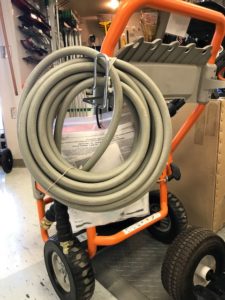 Hose and Wand Storage
Hose and Wand Storage
- Having a good place to keep the hose and wand between uses makes storage much easier. Keeping them off the ground and out of the dirt will also keep them clean and working longer.
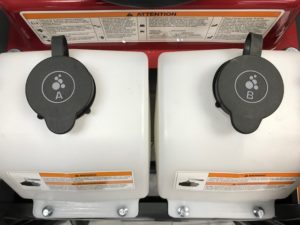 Soap or Detergent Reservoir
Soap or Detergent Reservoir
- Some power washers store cleaning chemicals in a bottle on the wand, then mixes it with the water as it shoots out the nozzle. However, many higher-end models keep detergent right on the body of the machine and mix it right at water leaves the pump, allowing a larger reservoir and few soap changes. Some even have space for two different kinds of soap. If you need to use a cleaning chemical frequently, the convenience of a soap reservoir might be worth it.

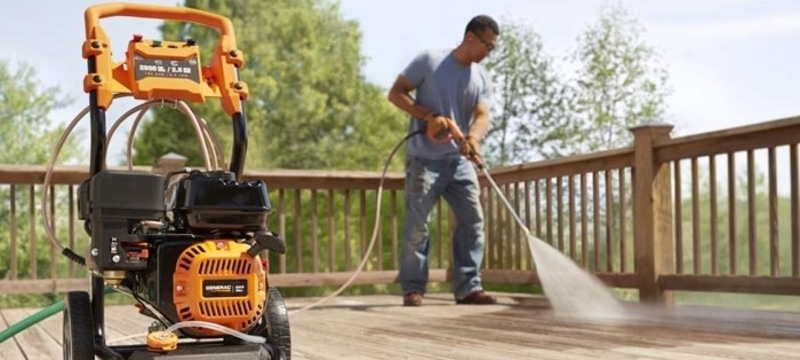
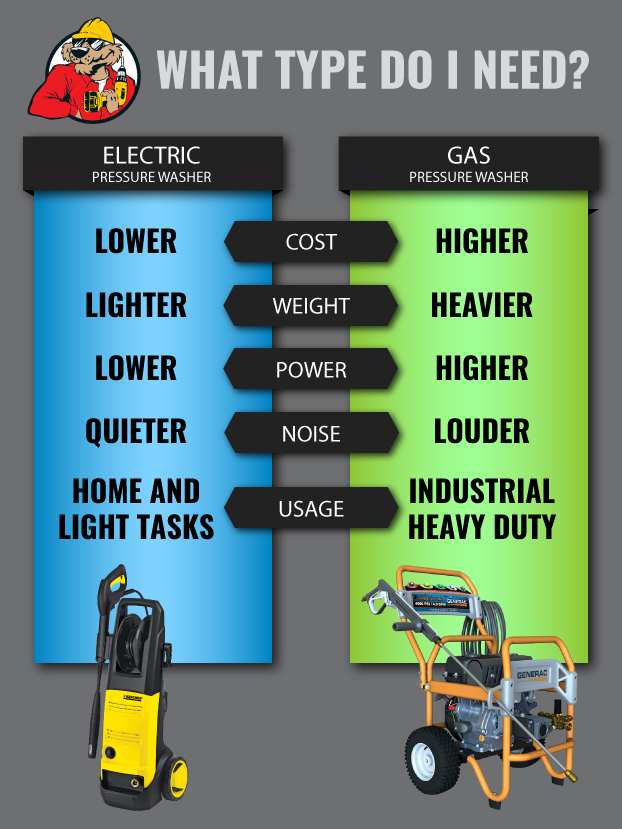
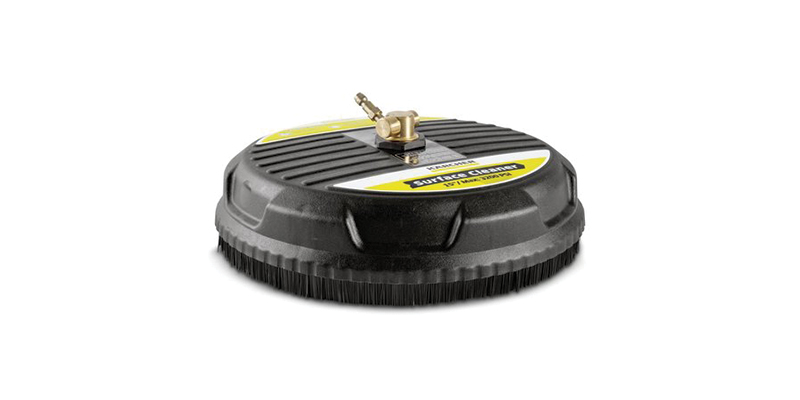

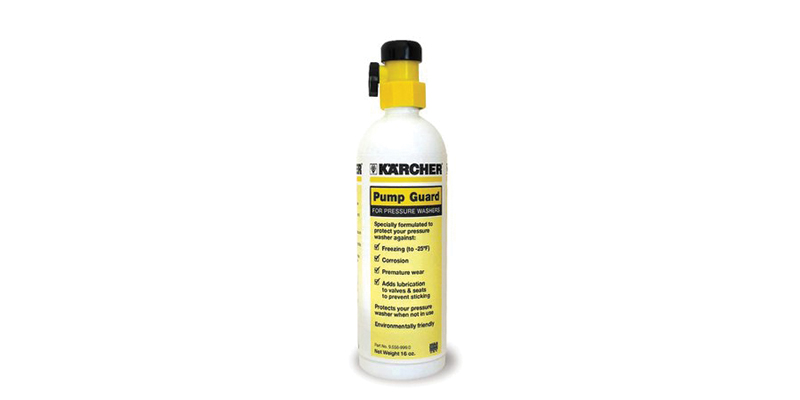
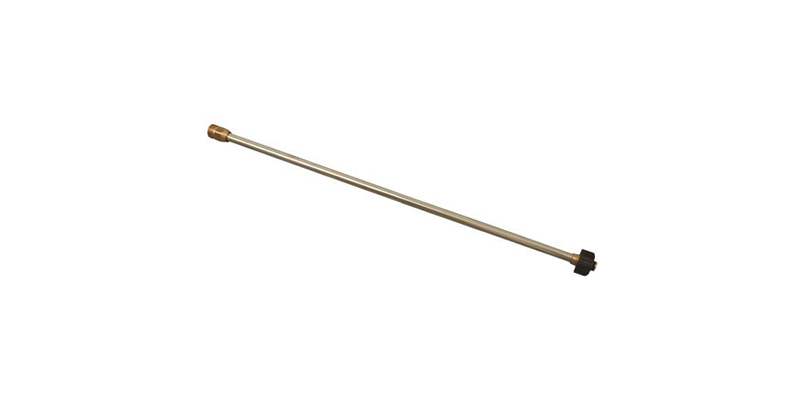
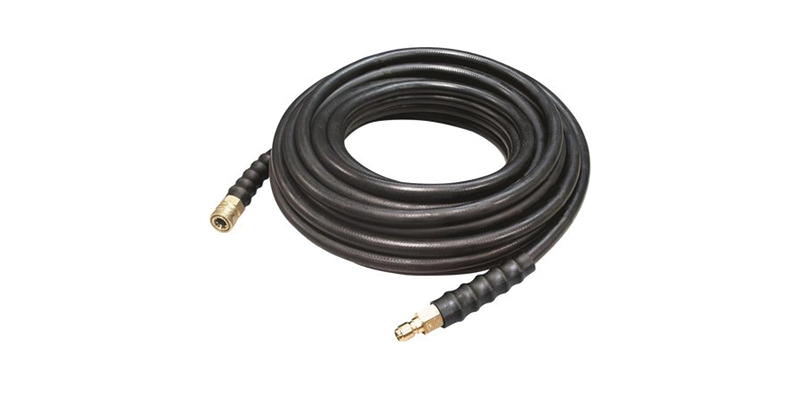
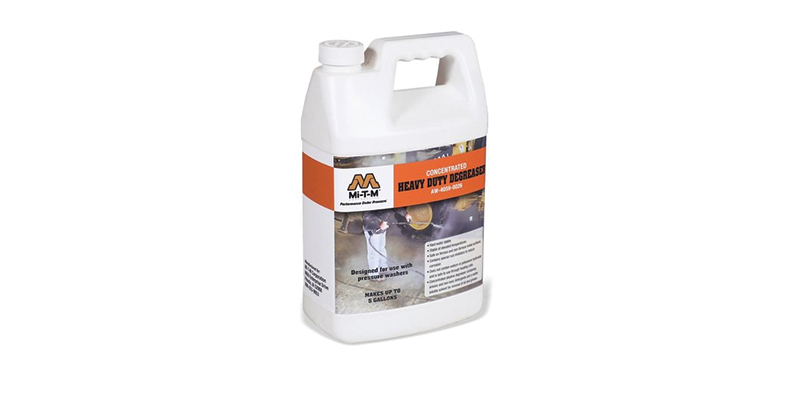
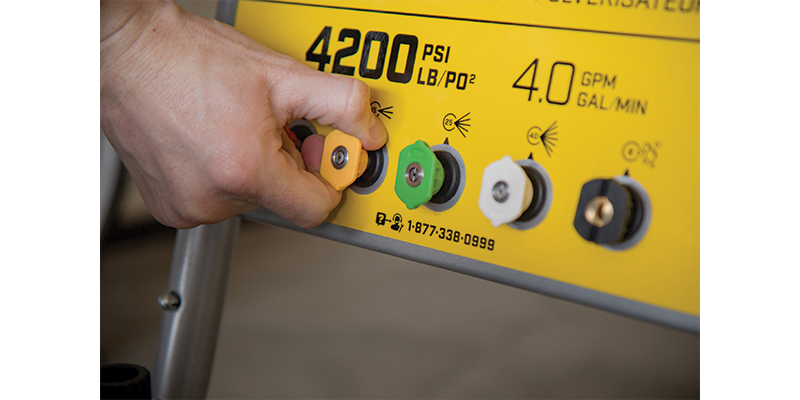


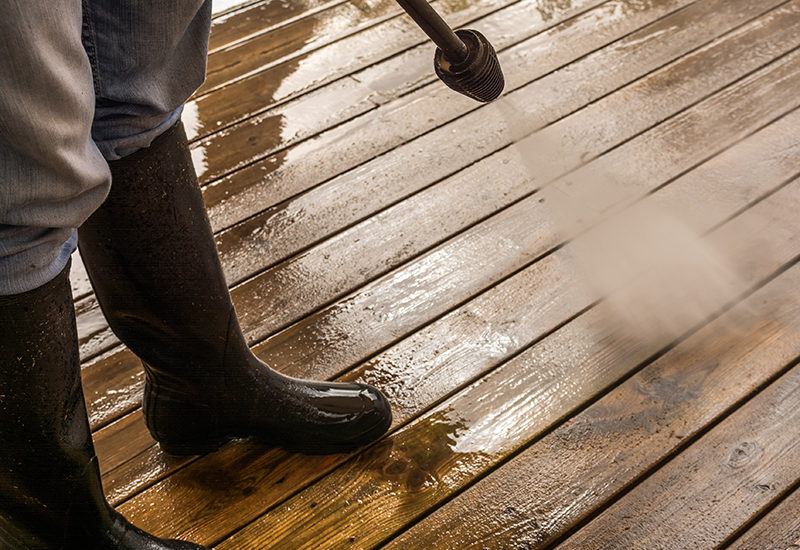
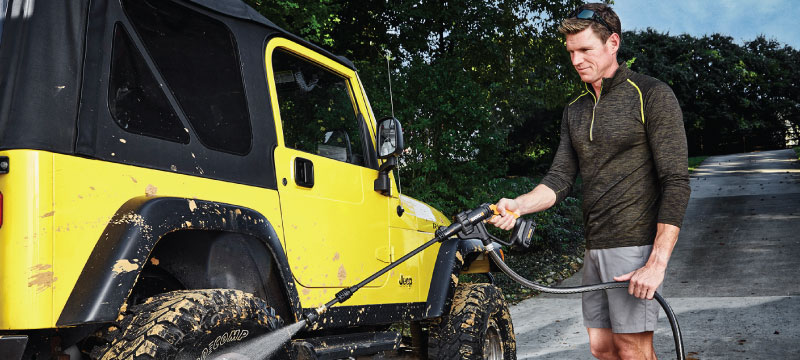
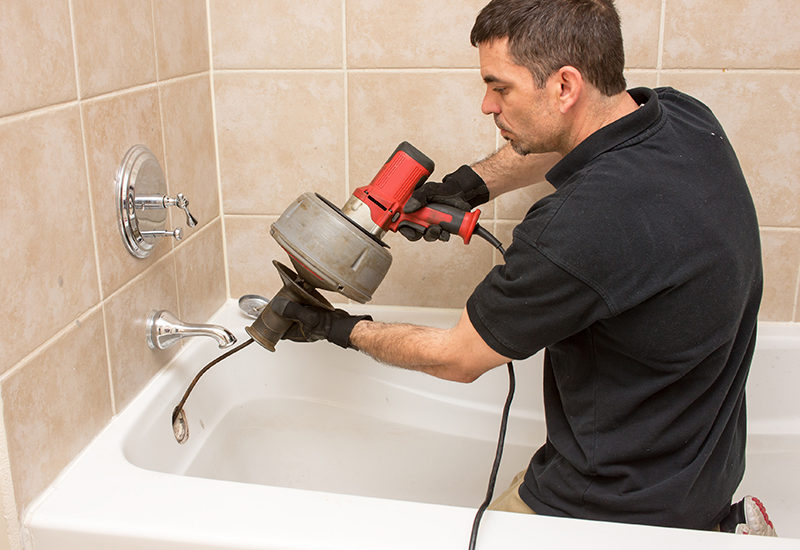
2 Comments
Michael Foley
September 30, 2019 at 10:44 pmWow, thanks! Very thorough and detailed.
Titan PK.
April 12, 2022 at 1:27 amThanks for the great post on pressure washers! I learned a lot.
I’m currently in the market for a pressure washer, and your article has helped me determine which one is best for me. Thanks again,